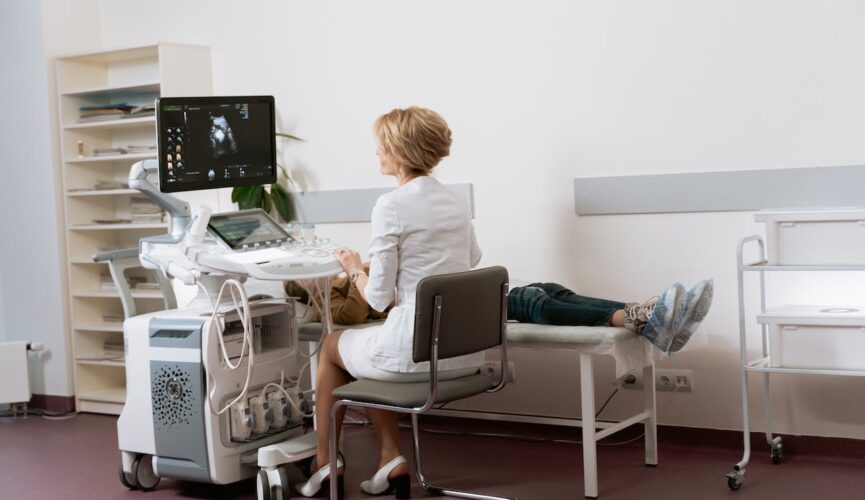In today’s advanced era of modern medicine, we are fortunate to have access to an array of medical technologies that have revolutionized healthcare. These groundbreaking innovations have not only transformed the way diseases are diagnosed and treated but also have significantly contributed to disease prevention. In this article, we will explore some of the most remarkable medical technologies that are saving lives and empowering consumers with a better understanding of diseases.
Introduction to Medical Technologies
Medical technologies encompass a wide range of cutting-edge tools, techniques, and devices used in the field of healthcare. These technologies empower healthcare professionals to accurately diagnose diseases, treat conditions, and provide efficient patient care. By harnessing the power of medical technologies, both doctors and patients can work together to improve health outcomes and even prevent life-threatening illnesses.
Diagnostic Imaging: A Window into the Body
One of the most remarkable advancements in medical technology has been the development of diagnostic imaging techniques. These imaging modalities provide healthcare professionals with a non-invasive way to visualize the body’s internal structures and identify any abnormalities. Technologies such as X-rays, computed tomography (CT) scans, magnetic resonance imaging (MRI), and ultrasound have transformed the field of radiology.
X-rays, the oldest form of diagnostic imaging, use small amounts of radiation to create images of bones and tissues. CT scans, on the other hand, produce highly detailed 3D images of the body by combining multiple X-ray images taken from different angles. MRI, utilizing a powerful magnetic field and radio waves, produces detailed images of soft tissues, including the brain and internal organs. Finally, ultrasound uses high-frequency sound waves to create real-time images, making it valuable in pregnancy and cardiovascular diagnostics.
By enabling doctors to visualize diseases and conditions, diagnostic imaging technologies have played a pivotal role in facilitating early detection, accurate diagnoses, and timely interventions, ultimately saving countless lives.
Minimally Invasive Surgery: Precision and Speed
Traditional surgery often involves large incisions, longer recovery periods, and higher risks of complications. However, medical technology has paved the way for minimally invasive surgical procedures that offer improved precision, faster recovery times, and better outcomes for patients.
Laparoscopy is a type of minimally invasive surgery that involves making small incisions through which a tiny camera and surgical instruments are inserted. This technique has been widely utilized in procedures such as appendectomy, gallbladder removal, and even complex surgeries like gastric bypass surgery. Similarly, robotic-assisted surgery combines the skill of the surgeon with the precision and dexterity of a robotic system. This technology allows for highly precise movements, reducing the risk of complications and speeding up postoperative recovery.
By enabling healthcare professionals to perform surgeries with minimal trauma to the body, these innovative technologies are not only saving lives but also improving the quality of life for patients around the world.
Telemedicine: Bridging the Gap
In recent years, telemedicine has emerged as a revolutionary medical technology that has brought healthcare closer to patients, regardless of their location. By incorporating video conferencing, wearable devices, and remote monitoring, telemedicine enables patients to consult with healthcare professionals without the need for a physical visit.
Through telemedicine, patients in remote areas can access specialists and receive timely medical opinions. This technology has proven to be particularly invaluable in emergency situations where quick diagnosis and intervention are crucial. Moreover, telemedicine allows for continuous monitoring of patients with chronic conditions, enabling healthcare providers to detect potential issues early on and intervene promptly.
By bridging geographical barriers and increasing access to healthcare, telemedicine has the potential to save countless lives, especially in underserved communities with limited healthcare resources.
Personal Health Monitoring: Empowering Individuals
Traditionally, healthcare was reactive, with doctors only addressing diseases after their onset. However, the rise of personal health monitoring technologies has shifted the focus from reactive to proactive healthcare.
Wearable devices, such as smartwatches and fitness trackers, have become increasingly popular among consumers. These devices can continuously monitor an individual’s heart rate, sleep patterns, activity levels, and even track certain health conditions. Through the use of mobile apps, users can gain insights into their health metrics and make informed decisions to improve their well-being.
Additionally, genetic testing has seen significant advancements, allowing individuals to gain insights into their genetic predisposition for various diseases. Armed with this information, individuals can modify their lifestyle and take preventive measures to reduce their risk of developing certain diseases.
By empowering individuals to take charge of their health, personal health monitoring technologies provide a proactive approach to disease prevention, potentially saving lives and improving overall well-being.
Conclusion
Medical technologies have revolutionized healthcare, transforming the way diseases are diagnosed, treated, and prevented. From diagnostic imaging techniques that provide a window into the body to minimally invasive surgical procedures that offer precision and speed, and from telemedicine that bridges gaps in healthcare access to personal health monitoring technologies that empower individuals, these groundbreaking innovations have reshaped the landscape of medicine.
As consumers, it is essential to stay informed about these medical technologies that are saving lives. By understanding and embracing these advancements, we can actively participate in our own healthcare journey, enabling us to live healthier lives and ultimately, contributing to disease prevention on both an individual and societal level.
